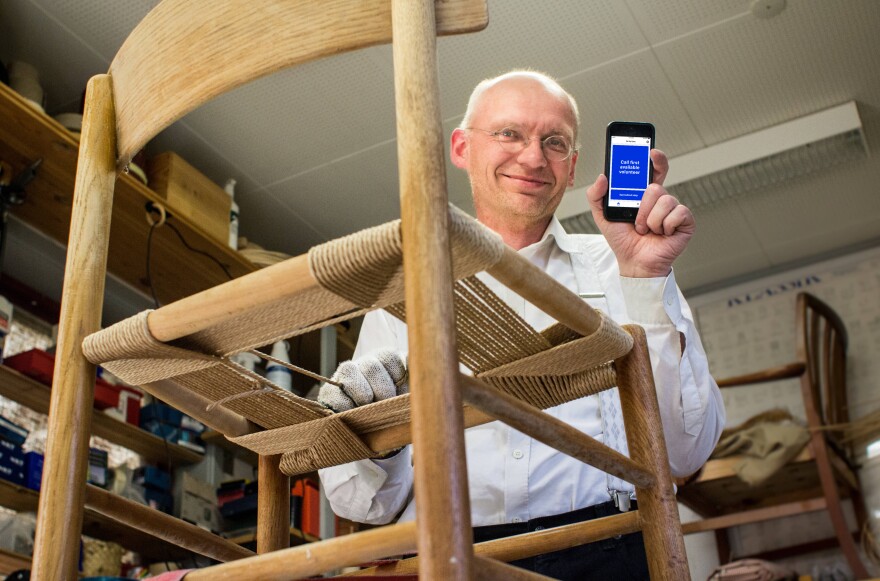Updated April 4, 2023 at 4:48 AM ET
Brian Fischler is blind. He can tell whether it's light or dark outside, but that's about it.
"I grew up sighted like everybody, and I was diagnosed at 13 with retinitis pigmentosa," Fischler says. "And for me, the lights went out about 2009."
Fischler, a New York-based standup comedian and podcaster, has used the app Be My Eyes since it first came out eight years ago.
It relies on sighted volunteers to do tasks like describe holiday cards sent in the mail, or tell you whether that can in your cupboard is coconut milk or chicken soup.

Or, in Fischler's case, to find an address in New York. "Here in New York City, you have a lot of businesses right on top of each other," Fischler says. "My guide dog can get me close to where I want to go, but he doesn't necessarily know what door I want to go to, especially if it's my first time going to a business."
The eyes of Be My Eyes? They come from the site's more than 6 million volunteers.
One of them is Steven Ellis of Goldsboro, North Carolina. Because he has visually impaired family members, he learned about the challenges of getting through life without the use of all five senses. When he signed up to volunteer for the app, Ellis connected with a user who couldn't connect his TV. The only way to tell the wires apart was by differentiating them by color, and he couldn't see.

Hans Jørgen Wiberg, a Danish furniture craftsman, created the app after he got tired of calling his friends and family to ask for help identifying things. (Wiberg is visually impaired.) He spent a couple years developing it, and the app launched in 2015.
But eight years later, there's a twist. As artificial intelligence, or AI, becomes more accessible, app creators are experimenting with an AI version using tech as well as human volunteers. Be My Eyes CEO Mike Buckley says the argument for AI is that it can do things people cannot.
"What if the AI ingested every service manual of every consumer product ever?," says Buckley. "And so you could tap into the AI and say, 'How do I hook up my Sony stereo?'" Furthermore, Buckley says, "we took a picture of our refrigerator and it not only told us what all the ingredients were but it told us what we could make for dinner."
But, he insists that AI won't completely replace the volunteers who make Be My Eyes so popular.
"I hope it ends up being 50-50 because I do think that there is going to be a desire for continued human connection," Buckley says. "There's some volunteer feedback we've gotten [that] when they actually get a call they talk about it as the best day of their week."
Brian Fischler, the stand-up comedian, is among a handful of users given early access to the AI portion of Be My Eyes. That part of the app is set to launch in a few months. So far, Fischler is impressed by its speed.
"It goes so above and beyond," he says. "It scanned the entire menu. But then I was able to ask follow up questions. I was in the mood for chicken and I was able to say, 'Just read me the chicken dishes.'"
But Fischler considers the AI portion to be a good complement to the app's human volunteers, rather than a replacement of them.
"I was a Terminator 2 kind of a guy where the machines rose up and they weren't exactly lovely and cuddly and helping us," Fischler says, referring to the 1991 film Terminator 2: Judgment Day. "So to have a tool like this which is going to be so valuable to so many millions of people around the world, and the fact that it's free is really, absolutely spectacular."
This story was edited for digital by Miranda Kennedy. Barry Gordemer edited the audio version. contributed to this story
Copyright 2023 NPR. To see more, visit https://www.npr.org.




